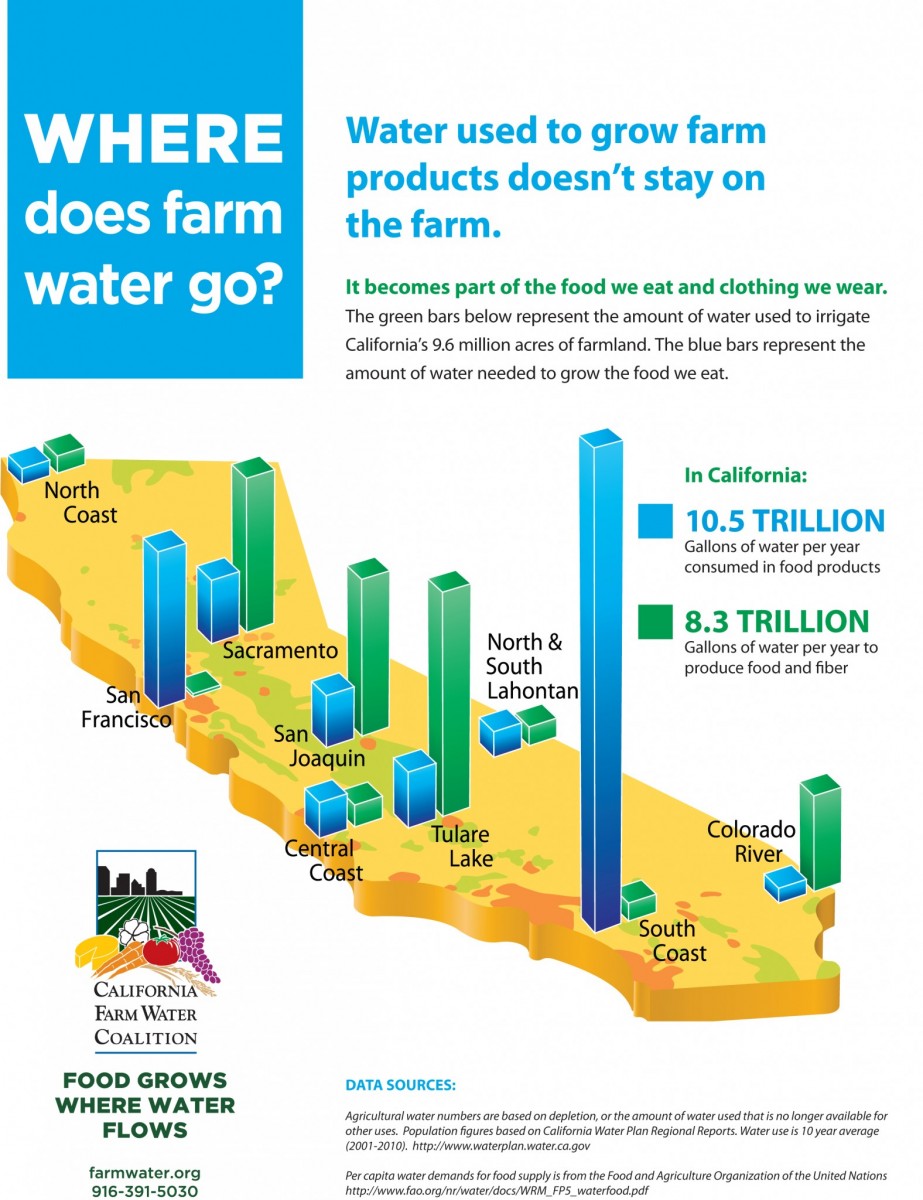Water that grows farm products doesn’t stay on the farm. Download the info graph here: https://farmwater.org/wheredoesitgo.pdf Plants need three things to grow: sunlight, soil…and water. Farmers depend on all three to grow hundreds of different crops right here in California. There’s no shortage of sunlight and soil… but four years of drought has caused deep cuts in […]
California drought affects farms and consumers
Farmers and consumers share a unique relationship. The California drought is helping people understand how important it is for farms to have the water they need to grow the food we all find at the grocery store. Serious water supply cuts affect our food supply as well as the people in rural communities who depend […]
I Heard it on the Radio
From California Farms to Your Table We enjoy a bounty of fresh fruits, vegetables and nuts grown on California farms – farms that produce about half of the fresh food in the U.S. But food only grows where water flows. California’s aging water system has put our economy, farmers and fresh food production at risk. […]
I Heard It On The Radio
Radio Advertising Water supply and jobs Water Supply and food security Have you heard recently on the radio about California’s water supply crisis and the devastating impacts water supply cuts are having on the people and communities that depend on farming for their livelihoods? The following statement by Dan Nelson, executive director of the San […]
CFWC radio ads hit the airwaves
From October 7 through November 23, California residents will be hearing about farm water and the need to fix the state’s ailing water supply system. The 30 and 60-second ads discuss the current water supply shortage as well as the legal and regulatory causes behind this year’s round of cuts that indled over 100,000 acres […]
Land fallowing and retirement
Peter Gleick of the Pacific Institute, on the Capitol Public Radio Show "Insight," today (Thursday, September 25, 2008) denied that land fallowing is a recommendation in their new advocacy report "More with Less." When questioned about the language in the report advocating large-scale land fallowing in the San Joaquin Valley, Gleick seemed to bristle and […]
Jobs
"Jobs" discusses how the agriculture industry provides a large amount of employment in the state and how farm dollars help support the community.
Healthy Food and Environment
"Healthy Food and Environment" discusses food safety, how farmers support the environment and that the San Joaquin River is important to the agriculture industry.
